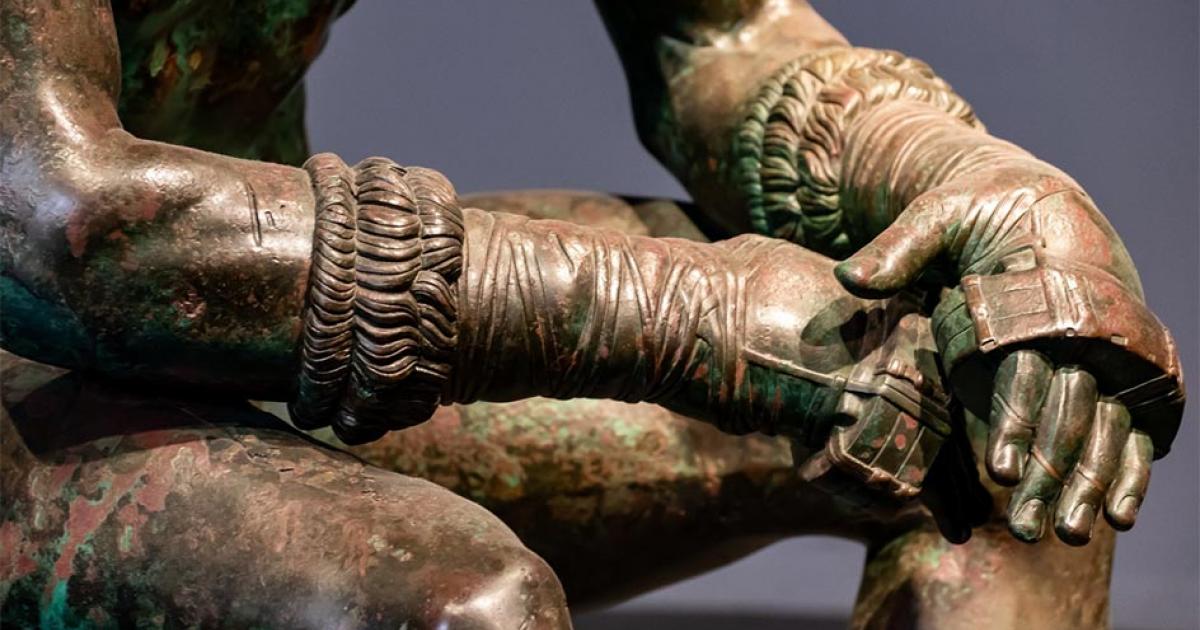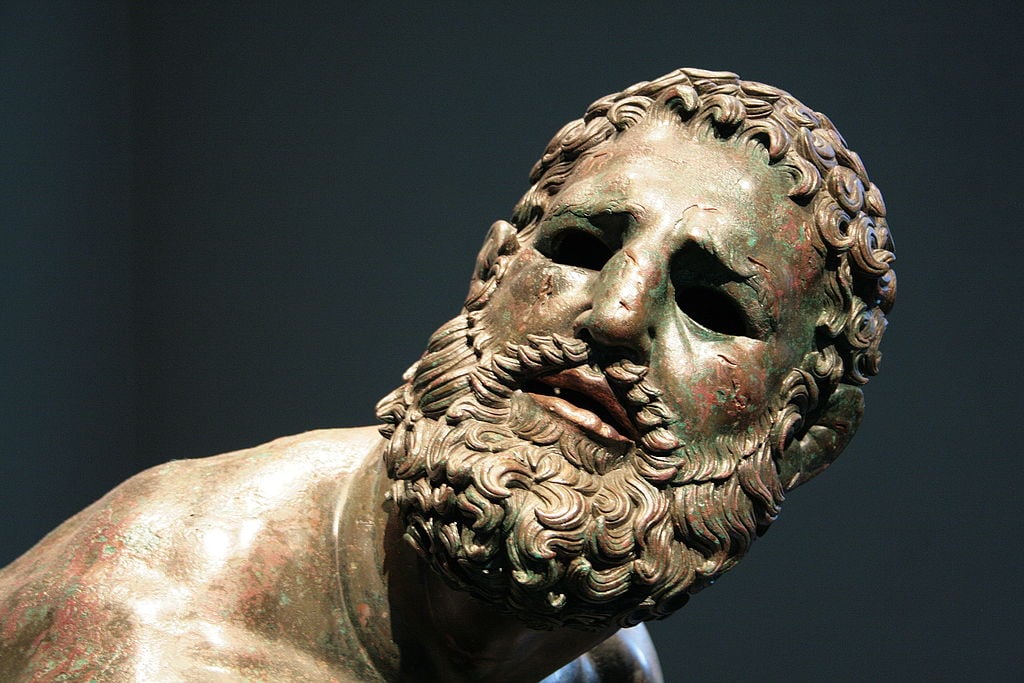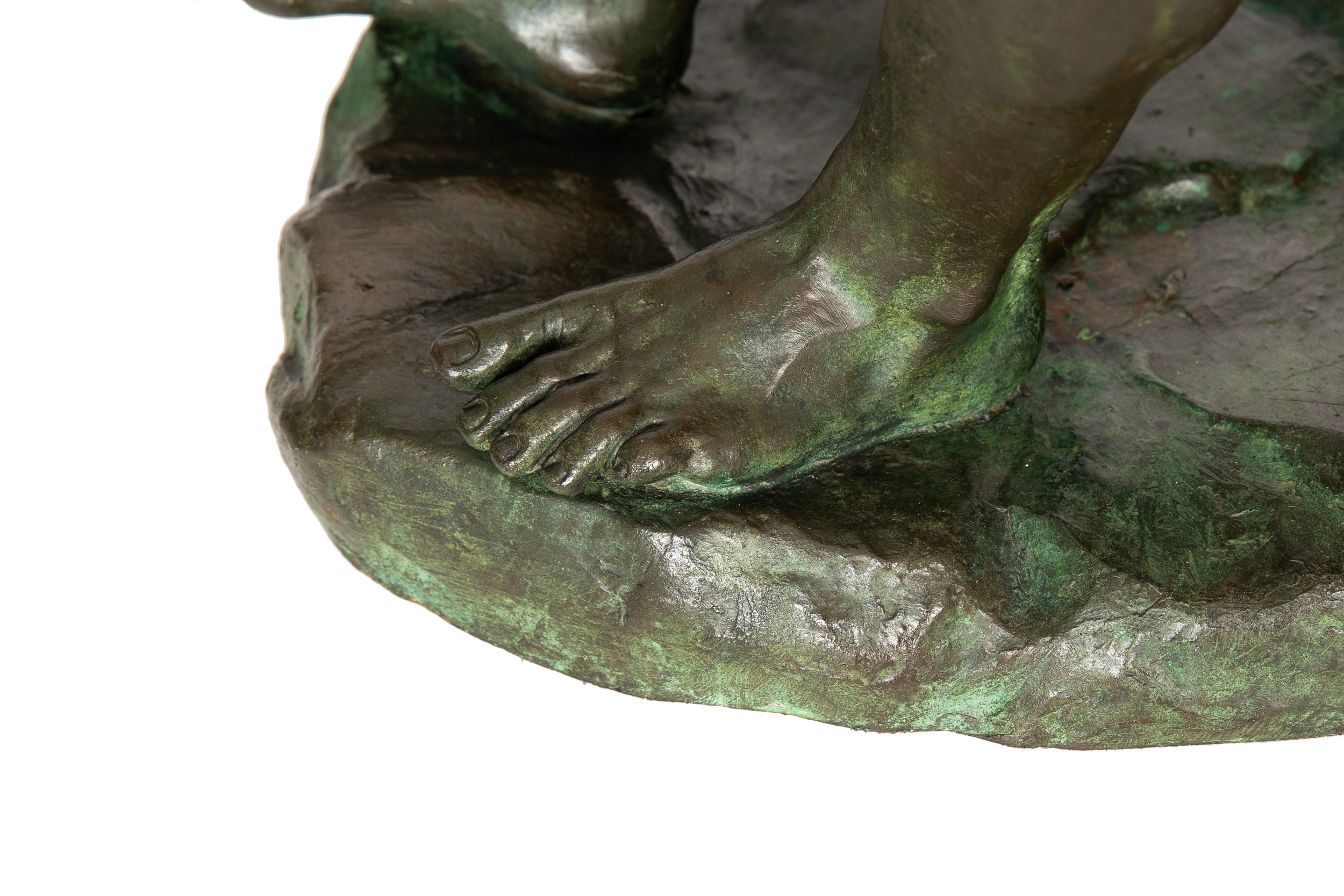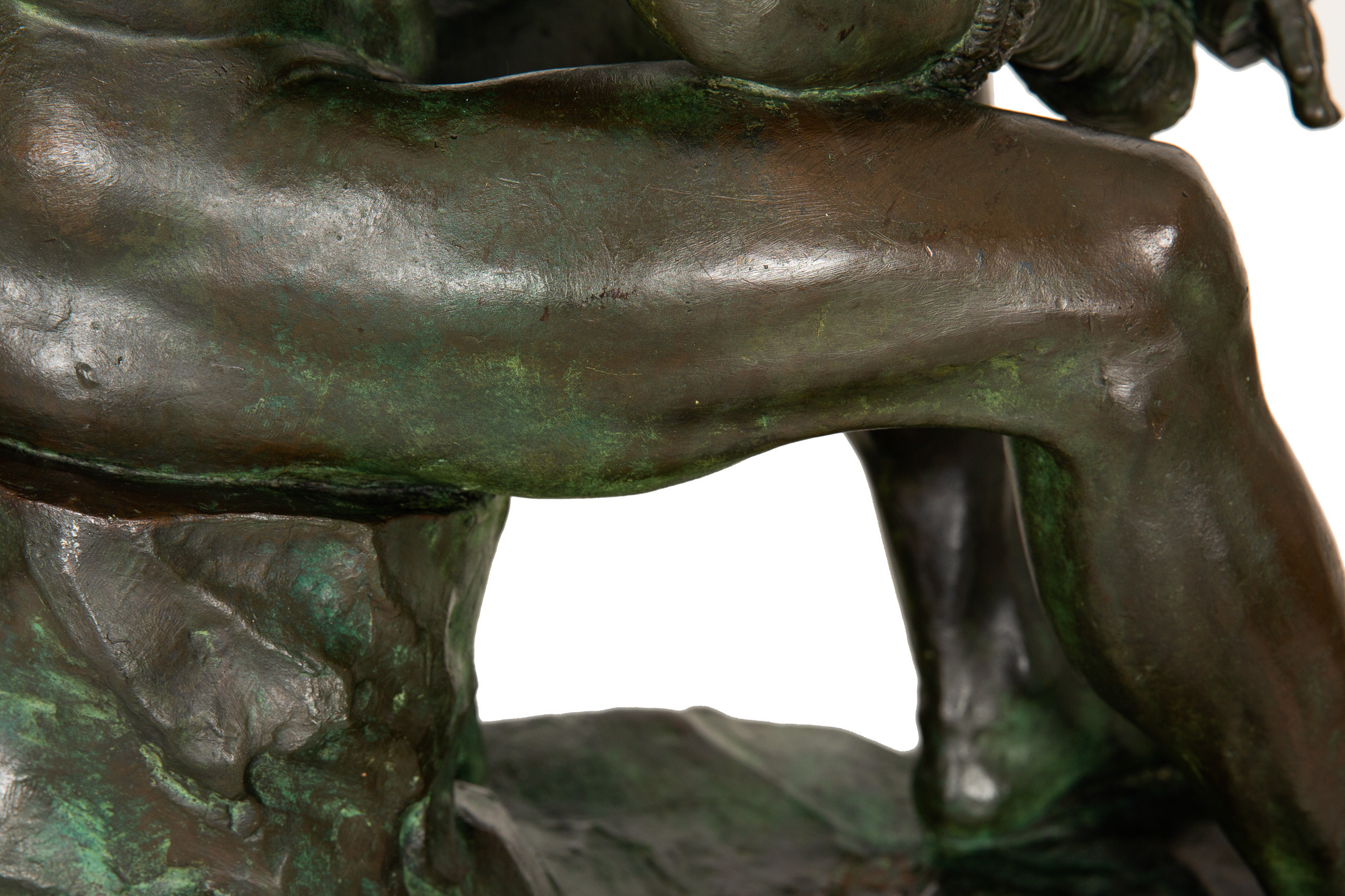The Boxer in Repose, also known as the Boxer at Rest, stands as one of the most compelling sculptures of the Hellenistic period, dating back to the 4th century BCE. This bronze masterpiece is celebrated for its extraordinary realism and emotional depth, capturing the physical and psychological toll of a seasoned athlete.
A Break from Tradition: Realism over Idealism
Unlike the idealized and heroic forms of earlier Greek art, the Boxer in Repose shifts focus to individuality and human vulnerability. The seated figure of the boxer, his posture slumped and his gaze cast downward, conveys exhaustion and defeat. His face, marked by bruises, swollen features, and cauliflower ears, reflects the aftermath of countless bouts in the ring. This attention to detail exemplifies the Hellenistic emphasis on realism and emotional expression.

Masterful Craftsmanship
The statue showcases the technical brilliance of Hellenistic bronze-casting techniques. The intricate depiction of scars, wrinkles, and veins captures the physical strain of the boxer’s profession. Inlaid copper highlights fresh wounds, while the use of contrasting textures—smooth musculature and weathered skin—adds to the sculpture’s lifelike quality.

The boxer’s hands are wrapped in leather thongs, known as caestus, a detail that speaks to the brutality of ancient combat sports. Every aspect of the statue, from its dynamic composition to its textured surfaces, demonstrates the artist’s ability to blend technical precision with storytelling.
Unearthing a Masterpiece
The Boxer in Repose was discovered in 1885 on the Quirinal Hill in Rome, near the ruins of the ancient Baths of Constantine. Archaeologists believe the statue may have been deliberately buried in antiquity to protect it during a period of upheaval. Its survival is particularly noteworthy, as most bronze sculptures from antiquity were melted down and repurposed.

A Symbol of Hellenistic Innovation
The Boxer in Repose exemplifies the Hellenistic focus on human emotion and the lived experience. The statue’s posture and expression evoke empathy, encouraging viewers to contemplate the resilience and vulnerability of the human spirit. This represents a pivotal moment in art history, where storytelling and realism took precedence over idealized perfection.

Legacy and Modern Significance
Today, the Boxer in Repose is housed in the National Museum of Rome, where it continues to captivate audiences with its timeless appeal. The statue bridges the ancient and modern worlds, serving as a poignant reminder of the universal themes of struggle, endurance, and humanity.

Conclusion
The Boxer in Repose is more than just a sculpture; it is a window into the lives and emotions of ancient athletes. Through its intricate details and profound realism, this masterpiece offers a glimpse into the Hellenistic world, where art was used not only to celebrate the divine but also to honor the complexities of the human condition. As a testament to the enduring power of art, the Boxer in Repose remains a symbol of resilience and vulnerability that resonates across millennia.

